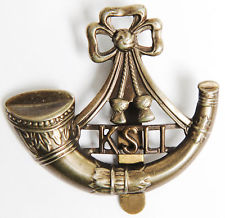Personal Details
Born: 21 July 1889 in Whitchurch, Shropshire and baptised on 31 July the same year in St. Alkmund’s Parish Church, Whitchurch.
Family: He was the elder of two children born to John Williams, a general labourer, and his wife Mary. He married Louisa Crewe in 1911 in Whitchurch; no children can be confirmed for the marriage.
Residence: In 1891 he was living with his family in Bark Hill Yard, Whitchurch; by 1901 they had moved to 3 Barlow’s Yard, Whitchurch and by 1911 to 5 Barlow’s Yard. The address shown for him on the 1919 Absent Voters’ Register was 45 Claypit Street, Whitchurch; he continued to live there until his death in 1954.
Employment: In 1911 he was a dock labourer; in 1939 he was a storeman in a cheese factory.
Died: In 1954 in Whitchurch, aged 65 and was buried on 22 December that year in Whitchurch cemetery.
Military Details
Regiment: King`s Shropshire Light Infantry
Rank: Private
Service Number: 24371
Date of Enlistment: August 1915
Date of Discharge: December 1918
Reason for Discharge: Not Known
Other Information: He was taken prisoner of war at Kemmel on 13 August 1918.
Alfred was awarded the Campaign Medals (British War Medal and Victory Medal)

The British War Medal (also known as 'Squeak') was a silver or bronze medal awarded to officers and men of the British and Imperial Forces who either entered a theatre of war or entered service overseas between 5th August 1914 and 11th November 1918 inclusive. This was later extended to services in Russia, Siberia and some other areas in 1919 and 1920. Approximately 6.5 million British War Medals were issued. Approximately 6.4 million of these were the silver versions of this medal. Around 110,000 of a bronze version were issued mainly to Chinese, Maltese and Indian Labour Corps. The front (obv or obverse) of the medal depicts the head of George V. The recipient's service number, rank, name and unit was impressed on the rim.
The Allied Victory Medal (also known as 'Wilfred') was issued by each of the allies. It was decided that each of the allies should each issue their own bronze victory medal with a similar design, similar equivalent wording and identical ribbon. The British medal was designed by W. McMillan. The front depicts a winged classical figure representing victory. Approximately 5.7 million victory medals were issued. Interestingly, eligibility for this medal was more restrictive and not everyone who received the British War Medal ('Squeak') also received the Victory Medal ('Wilfred'). However, in general, all recipients of 'Wilfred' also received 'Squeak' and all recipients of The 1914 Star or The 1914/1915 Star (also known as 'Pip') also received both 'Squeak' and 'Wilfred'. The recipient's service number, rank, name and unit was impressed on the rim.

